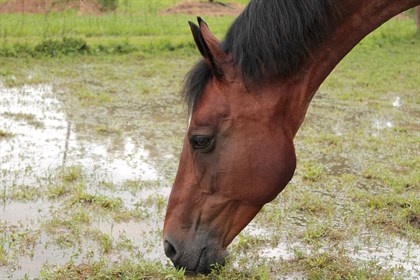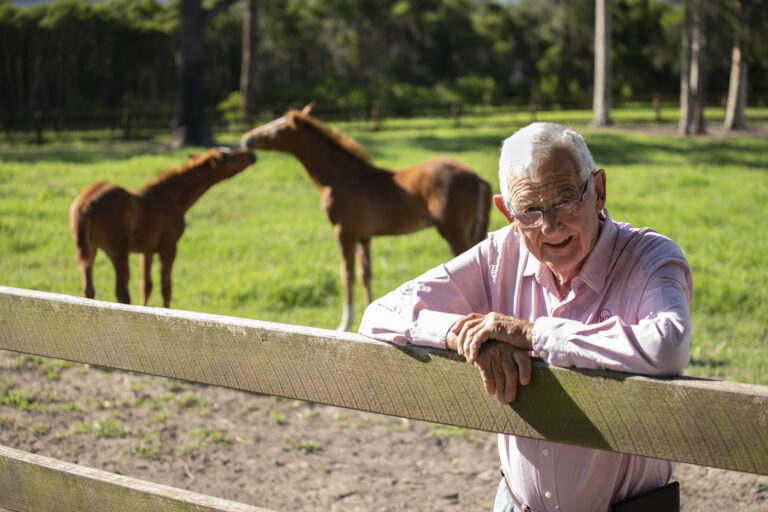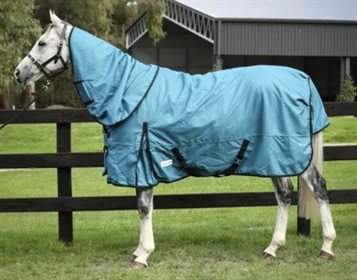Do you have a plan in place if a flood occurs?
Image © CJ / Pixabay
With parts of the New South Wales coast affected by flooding, and widespread rain forecast for the coming days, this article from Agriculture Victoria contains timely advice regarding the management of horses in flood situations…
Horses and floods
• What plans should I make if I live in a flood-prone area?
• What equipment do I need in an emergency kit?
• How do horses cope with floods?
• What are the health hazards faced by horses during floods?
Floods are one of the more common natural disaster faced by horse owners. Many properties are in floodplains but some owners have a false sense of security. People do not realise that living in a 100-year flood plain means that the chance of flooding is calculated as a 1% chance of flooding per year or a 30% chance in the lifetime of many mortgages.
Floods can be slow or fast rising. Slow-rising floods are typical as floodwaters move down a river or creek and can often be predicted to reach a certain height. Flash floods are usually the result of extremely heavy rain or melting snow and occur suddenly. They can also result from dam or levee bank failure.
Forward planning will greatly reduce the amount of animal and human suffering in any emergency situation including floods. The following information is offered as the basis of a plan to cope with floods.
Mitigating floods
As part of disaster planning for floods, as a horse carer you should make yourself familiar with the area in which your horses live. In particular, proximity to creeks, dams, waterways and drainage areas.
Councils will have information on floodplains in your area. Proper land-use management and compliance with building regulations will reduce some of the costs due to losses from flooding.
If you live in a risk area, make sure the driveway into your property is well constructed to protect you from being stranded during flooding.
Avoid building in a floodplain. Sheds and stables should be located in high lying areas sufficiently large to be used as a holding area for horses in the event of a flood. If you graze horses on floodplains, be prepared to move them to higher ground before low-lying evacuation routes become flooded.
Construct buildings for storage of farm chemicals such as herbicides, pesticides and fuels so that these have minimal chance of contaminating feed and water.
In broad, level flood plains where floodwaters are seldom deeper than one metre, you may need to establish areas of high ground on which horses can stay until floodwaters recede.
Regularly check the security of fencing and inspect buildings for sharp edges and soundness.
Preparing for floods
Preparing for floods includes actions such as stockpiling and replenishing emergency supplies, planning evacuation routes and ensuring equipment and vehicles are in proper working condition. Plan to be self-reliant for 72 hours and secure supplies in case of evacuation and/or having to care for horses without the day to day conveniences of electricity, readily available feed, and a safe water source.
Evacuation plan
Make a family and animal evacuation plan and make sure that everybody who lives, works or agists at your property understands the plan. Discuss contingency plans with neighbours and friends. If you are in a flash flood area, try to identify safer areas and have several alternate routes to ensure rapid evacuation. If you have a large number of horses, anticipate the course floodwaters might take and establish which horses you will move first. Start moving animals in advance of any danger. Even if the evacuation turns out to be unnecessary, at least you will have practised for the time when it might be.
Emergency kit
A well-stocked emergency kit should be established and kept where it can be reached easily and quickly. Items that are valuable in a disaster situation include:
• torches and a portable radio (with extra batteries)
• food that requires little or no cooking or refrigeration
• emergency cooking equipment
• drinking water
• a shovel and an axe
• wire cutters
• equine first aid items
• leather gloves
• extra head collars and lead ropes as well as
• extra clothing for both humans and horses.
Identification of horses
Prepare a written description of each horse including information about any permanent identification features such as brands or microchips and place this with photographs of horses and proof of ownership in a waterproof container. Keep this with you. The information will assist retrieval of horses from an emergency holding facility, or help you find them should they get loose or lost during the flood.
Make up identification tags that animals can wear on their head collars or around their necks while at a holding facility.
Transport and communication
Keep vehicles and horse floats in good working order and equipped with petrol, area maps, a mobile phone and emergency numbers.
Food and water for horses
In case of emergency evacuation, keep in the float:
• hay in nylon sacks
• feed in plastic bags or containers with tight fitting lids
• buckets and
• an extra 20 litres of drinking water.
Food is often initially unavailable or quickly depleted at holding facilities if the horses are evacuated.
Trained horses
Horses should be taught to load into a float or horsebox so that if a flood strikes stress and delay will be minimised in the event of an emergency evacuation.
Evacuation
Listen to radio announcements from emergency officials. If evacuation becomes necessary remove horses to a safer area as soon as possible and before access roads become impassable. Use only those routes recommended by local authorities. Turn off all utilities at the main switch before you leave. To assist emergency services, place waterproofed notes in the stables and house indicating if there are any animals left on the premises.??Do not attempt to drive over a flooded road – you could become trapped or stranded – and do nottry to ride horses through swift moving, deep water.
Horses caught in floods
If you have to leave your horses behind, ensure they have an easy escape route. Do not leave them stabled or in small yards. Many animals have died in floods when owners left them confined. Horses can swim quite well and can handle water up to their bellies for lengthy periods.
They need to be fed where they are and can be kept warm by eating hay. However, some limb swelling will occur with prolonged water contact. In general, most horses can handle their limbs submerged for 48-72 hours.
Health hazards
In fast rising floods horses can be swept into obstacles, including fences and corrugated iron, which can cause seriously injuries.
Mud can pose a serious hazard for stranded horses. If trapped and immobile they can fracture a limb or seriously injure themselves struggling in deep, sticky mud.Eye injuries are commonly sustained when horses attempt to pull themselves free and hit their faces on stalls or fencing. Other hazards common to horses after floods include rainscald, mudfever, foot problems, pneumonia, wounds (especially to the legs), waterborne illnesses such as leptospirosis, and problems from drinking contaminated water or eating mouldy food.
If your horse requires medical attention you should contact your local veterinarian as soon as possible. If your horse is in need of euthanasia you can also contact your local council, the RSPCA, or DEPI to humanely euthanase your horse.
Before restocking flooded pastures, check to make sure the perimeter fences are intact and remove dangerous debris especially along fence lines and in corners. Water may have ruined the pasture causing a “green drought”. In these circumstances horses will need supplementary feeding. Lack of adequate forage could also force horses to eat poisonous plants.
Mosquitos and other insect pests may be abundant after a flood. They not only annoy animals, but some species may carry disease. To reduce mosquitoes around horses purchase insect repellent from your local horse equipment store or veterinarian.
References
The “Animals in Disasters Independent Study Course” prepared by the Emergency Management Institute, the educational wing of the Federal Emergency Management Agency in the United States of America.
?The course is available in two modules:
• Module A: Awareness and Preparedness (IS-010).
• Module B: Community Planning (IS-011).
Copies can be downloaded from Federal Emergency Management Agency (FEMA)
Herbert K and Heath S (1999) Disaster Planning. In The Horse published by The Blood-Horse Inc, Kentucky, June issue, pp 20 – 35.
Madigan J (1998) Recent weather phenomena highlight need for disaster planning World Equine Veterinary Review 3(1):43.
Source: Agriculture Victoria website
READ THE LATEST NEWS ARTICLES HERE









